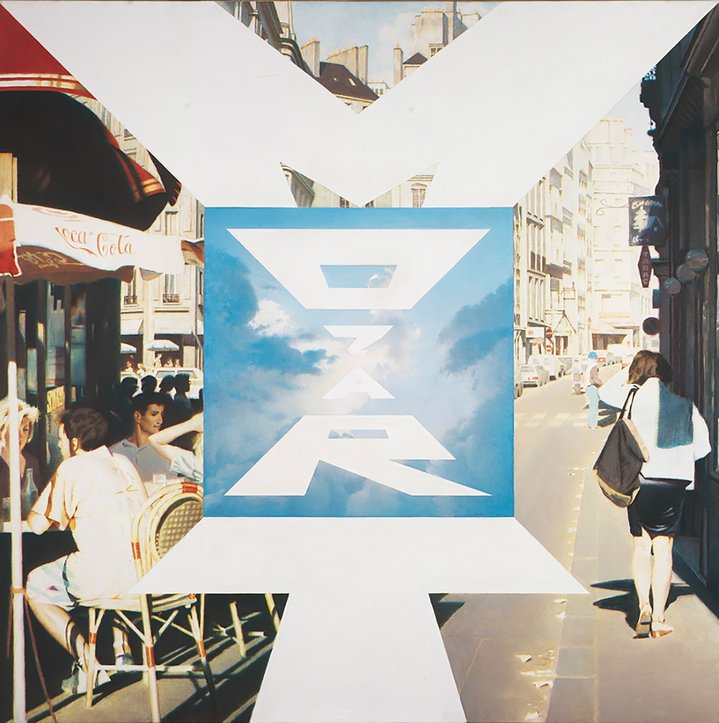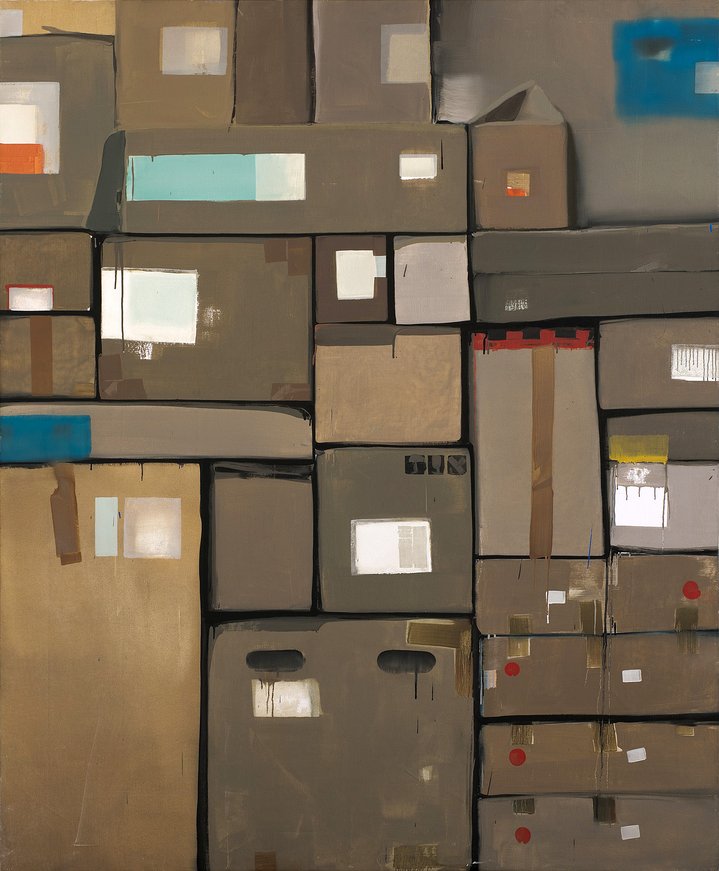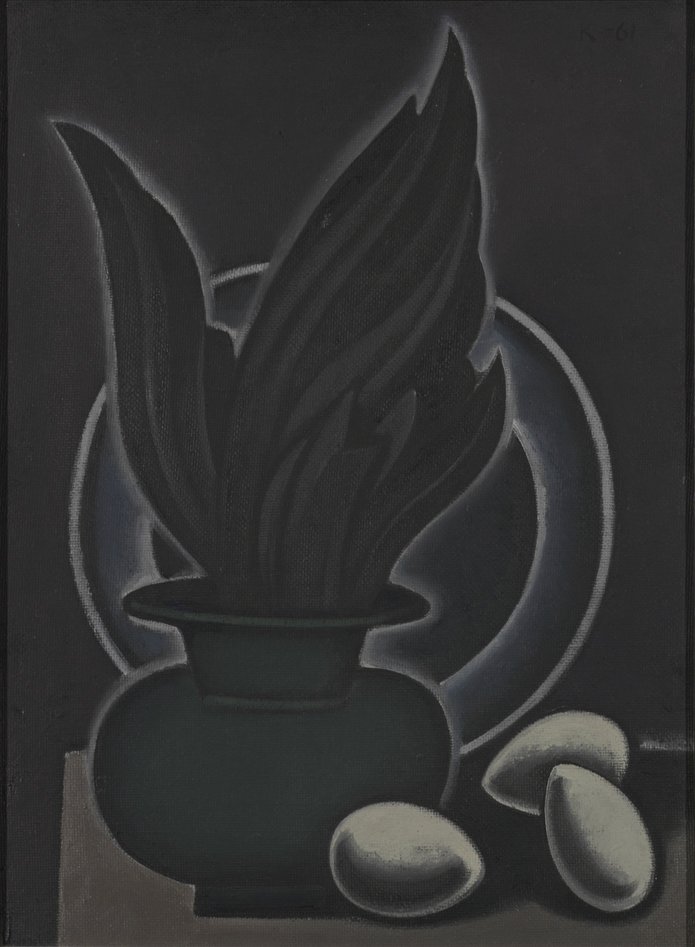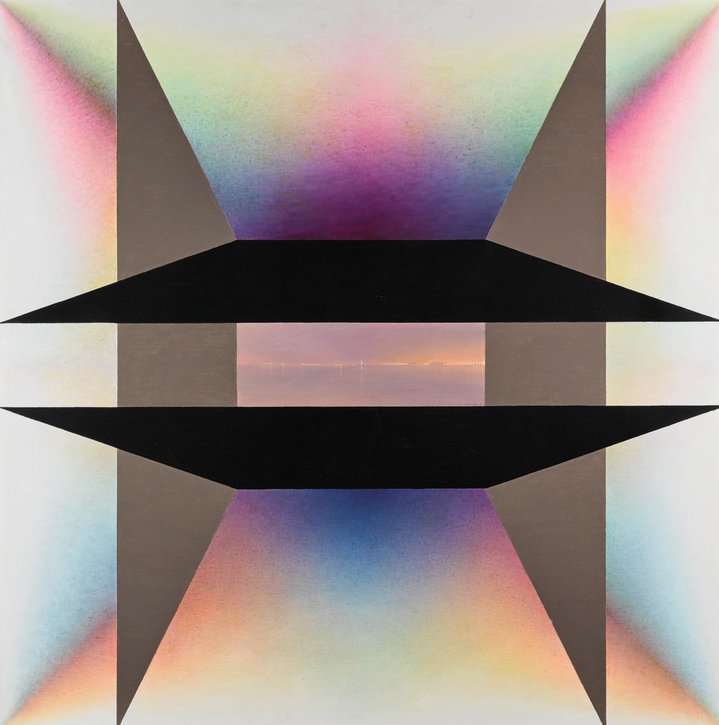Igor Markin: nothing to hide

Igor Markin, the founder of Moscow’s Art4 museum, is showing his collection after a long break. A collector and gallerist who turned his passion into a profession, he is not discouraged by the weak market for contemporary art. He keeps searching for rare works by the artists of the 1960s’ while promoting the younger generation.
With the tousled locks and bashful smile of an enigmatic rock star, Igor Markin is one of Moscow’s most active contemporary art collectors, who turned his passion into a profession after losing much of the post-Soviet business fortune he had built by selling refrigerators and window blinds.
He remains loyal to his first loves in art, the paintings of the Soviet non-conformist artists Vladimir Weisberg (1924–1985) and Dmitry Krasnopevtsev (1925–1995). Those two deceased artists are now the focus of Markin’s “Perfect Collection” show at his Art4 museum, located in a luxury apartment building tucked away on a side-street in central Moscow. This homage to his quarter-century as a collector will run through the summer and also features some of Russia’s most promising younger artists, including Danila Polyakov, Alexander Tsikarishvili and Anya Zholud.
The space, which Markin opened in 2007, was the new Russia’s first private contemporary art museum. Unfortunately, its ambitions were significantly scaled back after the 2008 financial crisis. It was rebranded in 2015 as a commercial venue with museum-quality shows. Markin, who claimed he was worth $60 million in 2007, says the value of his business fell tenfold after the crisis, and he ultimately sold it some four years ago. His collection’s value has also shrunk, but he would not reveal its worth. He used to display 500 works, but is now showcasing less than a third of that.
“We’ve sold a part and have bought even more… I search all over the world and buy what I think is good. The Weisberg part of the collection has changed a great deal. It has improved. I have 26 paintings by Krasnopevtsev. I think that’s much more than in any other collection,” Markin said. He is an artist that Markin actively hunts. It helps that prices have dropped due to the current economic crisis and weak demand, both in Russia and abroad.
He points out two recent Weisberg purchases on the wall, "Six White Columns" and "Three Big Cubes," bought at the Sotheby’s London sale in November 2018 for a total of over 56,000 GBP from the collection of the late cellist Mstislav Rostropovich and his wife, opera singer Galina Vishnevskaya, in what turned out to be a fortuitous purchase. “The main collectors missed this auction — otherwise, such works could have sold for at least double that price,” Markin explained.
A generation of old foreign collectors who were intrigued by Soviet art is dying off and works from their collections are also hitting the market, as their heirs don’t want to hold on to them. “There was an Iron Curtain then. It was fun… It was a completely closed country that was not free. I really understand their interest,” Markin said, speaking of that vanishing epoch.
Nevertheless, Markin is also drawn to a new, promising cluster of artists from St. Petersburg, which now also boasts several strong young art collectors. He describes Tsikarishvili and his Sever-7 (North-7) group as “varied and bold,” and believes that all of the city’s artists have a unique “Petersburg colour” in their works.
Markin is promoting Danila Polyakov, a well-known model. The collector predicts that he and the rest of the Petersburg artists, particularly “those who are no older than 35, have a chance” on the international art scene. Although the regional art scene is developing, Markin says it’s still best for artists to be in Moscow if they want to make it in Russia — and to be in New York to make it in the world.
Russia’s art market continues to live in suspended animation. The successful relaunch of the sophisticated Cosmoscow art fair has given it some new life, but the market is still in “very serious” crisis, and “prices for an artist are more likely to fall,” says Markin. Yet cheaper prices do not guarantee a flood of new collectors willing to shell out more. At the same time, the overall art scene in Moscow is unusually intense, according to Markin, who cites the work of such institutions as Dasha Zhukova’s Garage Museum of Contemporary Art and the V-A-C Foundation art centre that oligarch Leonid Mikhelson is building.
“Russia develops like an empire, and Moscow is the capital of the empire, so whatever poverty and decline there might be, all the money is still concentrated here and the authorities swagger and say that all is clean and tasty here and there is art,” said Markin, describing the situation as a paradox.
“How can we regard things as better with a war in Ukraine? It’s a completely awful situation. Or [the situation with] international sanctions. It is a fiasco.” In spite of the depressed market, talented artists continue to appear. Markin describes Moscow as a parallel universe. There is a “huge number of exhibitions and events, even too many in my view… (there is an) absolutely incredible competition for viewers and huge new institutions are opening.” He sees this as “strange” given the state of affairs. “Right now things will remain as they are,” said Markin. “Nothing will change.”













